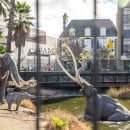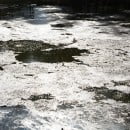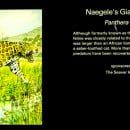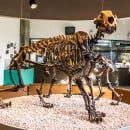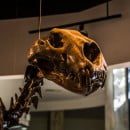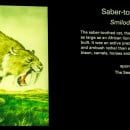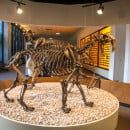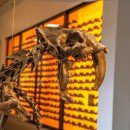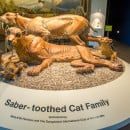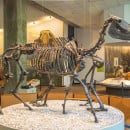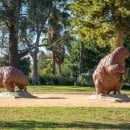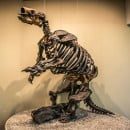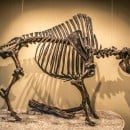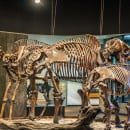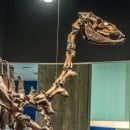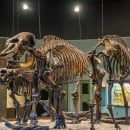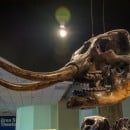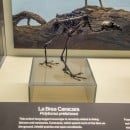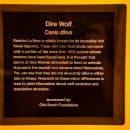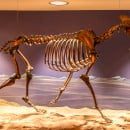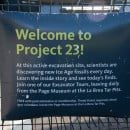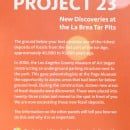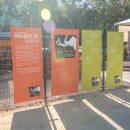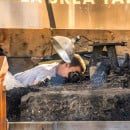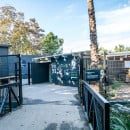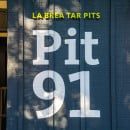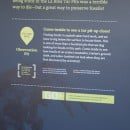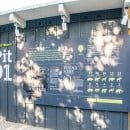The La Brea Tar Pits (or Rancho La Brea Tar Pits) are a group of tar pits around which Hancock Park was formed, in urban Los Angeles. Natural asphalt (also called asphaltum, bitumen, pitch or tar—brea in Spanish) has seeped up from the ground in this area for tens of thousands of years. The tar is often covered with dust, leaves, or water. Over many centuries, the bones of animals that were trapped in the tar were preserved. The George C. Page Museum is dedicated to researching the tar pits and displaying specimens from the animals that died there. The La Brea Tar Pits are a registered National Natural Landmark. [SOURCE]
When we started discussing the trip to L.A. for the Avengers Half Marathon I put La Brea Tar Pits on my list of must-see places. Unfortunately when I mentioned it to people most of them had no idea what I was talking about. Lucky for us there are no deposits of this nature here or I might have fewer friends. Regardless – it is a great museum and incredible forward-thinking on preserving both the land and the fossils leaving us important information on early mammals in North America. Before you ask – there are no dinosaurs in the tar pits. I know we all struggle with our planet’s historical timeline but the animals found here are predated by dinosaurs by approximately 65 million years.
Great stop on the trip and maybe one of the most interesting museums I’ve been to as far as the time period covered. The oldest fossil found being a relatively short 38,000 years ago compared to the millions of years old dinosaur bones frequently held in museums. The size of the animals, particularly of the Saber Tooth Tiger the Dire Wolf and the Sloth, were also impressive. Definitely worth taking a little time off from the busy traffic and stopping into this unique slice of history.


